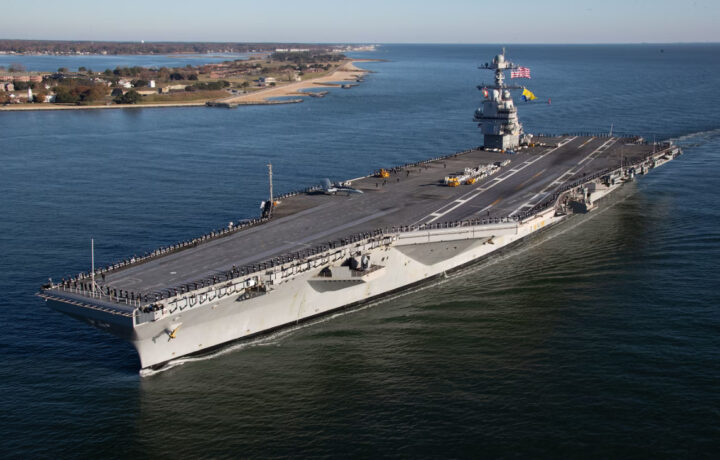The U.S. Navy’s top civilian casts blame on American shipbuilders for failing to make enough of a contribution on their own to increase production rates at their shipyards. On Tuesday, Secretary of the Navy Carlos Del Toro told Senate lawmakers that the U.S. shipbuilders need to invest more money in their facilities to help the U.S. Navy reach its fleet requirements.
His testimony to the Senate Appropriations Committee came just over a month after he toured South Korean and Japanese shipyards, and called for more allied foreign investment.
An increased investment
Del Toro had toured the Mitsubishi Heavy Industries shipyard in Yokohama, Japan, and South Korea’s Hanwha Ocean and HD Hyundai shipyards during his Western Pacific trip in March. He encouraged those shipbuilding firms to invest more in both U.S. commercial and naval shipbuilding.
“Shipyards are not making enough of a contribution,” Del Toro testified during the SAC hearing on the U.S. Navy’s posture, and he added that the sea service has already invested billions of dollars in shipbuilding plans, yet the U.S. shipbuilders have been using money to buy back stock in their own companies.
“We need them to invest in their own shipyards,” Del Toro stated.
That sentiment was shared by Senator Jon Tester (D-Montana), chairman of the SAC defense subcommittee, who also suggested that the US shipbuilders were too focused on buying back stock before investing in their shipyards.
“We will do whatever we can do to make sure they have a workforce, but damn it, they gotta step up to the plate,” said Tester.
As previously reported, five classes of vessels being built for the sea service are now running anywhere from one to three years behind schedule.
A Reoccurring Issue
This was not the first time the SECNAV had complained that the shipbuilders had failed to invest in their respective infrastructure. At the AFCEA West conference in February, Del Toro also called out the industry for not investing enough.
“You can’t be asking the American taxpayer to make great public investment while you continue to goose your stock prices through stock buybacks, deferring promised capital investments, and other accounting maneuvers,” the SECNAV emphasized.
Shipyard officials from Huntington Ingalls Industries and other major yards have also been quick to note their capital expenditure funding in their respective facilities in recent years.
“HII’s CAPEX funding is over USD1.5 billion for the two shipbuilding yards, from 2019 to 2023,” HII said in a statement to Janes after the SAC hearing earlier this year, while following an April 4 media roundtable, HII president and CEO Chris Kastner told reporters, “From a capital standpoint, we’ve spent USD3 billion since 2015.”
HII has expanded its shipbuilding capability for aircraft carrier construction by relocating to another city in Virginia, which in turn also freed up more space for its submarine business at the Newport News Shipbuilding facility. The company has said it is investing $4.1 billion over a decade on its facilities at its Ingalls and Newport News shipyards – and further denoted that it had spent 4.9% of its revenue on capital expenditures in 2017, 2018, and 2019.
In addition, several other U.S. shipbuilders have sought to expand to handle the U.S. Navy’s workload. That included Fincantieri Marinette Marine (FMM), which overhauled its Wisconsin facility to construct the U.S. Navy’s new Constellation-class guided-missile frigates; while Austal USA recently retooled its Alabama shipyard to build steel ships after building the aluminum Independence-class littoral combat ships (LCS) and Spearhead-class expeditionary fast transports.
Size of the Fleet Also in Question
Del Toro was also questioned for the sea service’s plan to grow its fleet, with Senator Lindsey Graham (R-S.C.) casting blame on the Navy, with its fiscal 2025 budget request growing less than 1% over the FY24 spending plan.
“We’re saying one thing and doing another,” Graham suggested of the funding plan. “We talk about a Navy that can confront threats that are growing, and our budgets do not meet the needs of this country by a factor of a bunch.”
In December, it was reported that the United States Navy’s fleet size was the smallest it has been since the First World War.




